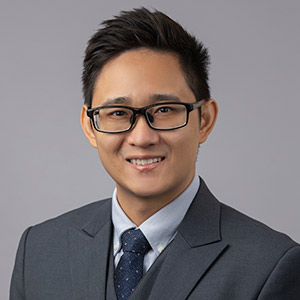Beyond the Present: A Journey to Identify Future Risks Imperiling Humanity
By Marcus (Minh) Le, MBA ’24

(photo: rawpixel)
What is the next existential threat lurking around the corner? In a post-pandemic world, people have become all too familiar with the term “existential risk.” With COVID-19 a mere blip on the radar, it was a wakeup call to humanity about our vulnerability to unforeseen dangers. My journey at Quantum Risk Analytics was about just that: uncovering the secrets behind the next big peril and creating strategies to minimize its impact.
Quantum Risk Analytics, a pioneering nonprofit, first gained traction in 2020 with its innovative COVID-19 personal risk assessment tool called Pandemonium, which allowed individuals to gauge their vulnerability to the virus. Joining the team as a strategic planning and societal risk analyst intern, I was tasked with the challenge of identifying the “next big thing” on the research team’s plate.
Unmasking the next existential threat
Before diving into the specifics, I had to undergo an exhaustive learning process to get up to speed on the mechanics of the organization. I conducted literature reviews, marked down key organizational resources, and assessed market demand. Soon, I came up with a narrow list of two major issues: the ongoing climate emergency and artificial intelligence. Deciding which of these two immense and complex risks to suggest to the Quantum Risk Analytics team was no easy feat. After discussing the issues with their management team and advisors and weighing severity, immediacy, and organizational capability, we ultimately set our sights on assessing the risk of artificial intelligence (AI) as our focal point.
Steering the ship: Reframing future strategy
The pivot towards AI marked the beginning of the second half of my internship. Boldened by our new direction, my primary responsibility shifted towards realizing this newfound objective. The ultimate goal was clear—pivot to become a large-scale research organization that not only identifies various existential risks but also engineers solutions and frameworks to preemptively counter them.
Crafting a business plan— a critical blueprint that detailed our organization’s future—was paramount. I was at the helm of developing Quantum Risk Analytics’ renewed vision and mission. These weren’t just platitudes to be slapped onto an office wall; they were our purpose in a world fraught with uncertainties.
Developing a long-term strategy was the next piece of this intricate puzzle. The next three years will be critical for Quantum Risk Analytics, as the team transitions from the startup phase to becoming a formidable player in existential risk research. This strategy encompassed everything from recruitment plans and resource allocations to research directions and partnership opportunities.
However, strategy without execution is a ship without a rudder. My next challenge was to chalk out actionable plans, financial projections, and key performance metrics. I meticulously plotted every milestone, every financial detail, and every performance parameter to ensure we stayed on course.
A brief reflection
This fascinating journey would have been impossible without the invaluable support of the Samuel Curtis Johnson Graduate School of Management, including the Social Impact Internship Fund through the Center for Sustainable Global Enterprise and Johnson’s Career Management Center. The fund helped provide the financial and organizational support that I needed to succeed at Quantum Risk Analytics.
In short, my time at Quantum Risk Analytics was more than just an internship; it was an eye-opener to the myriad challenges humanity stands to face, a testament to the power of collaboration, and a demonstration of how young minds can contribute substantively to steering our collective futures away from existential perils. The lessons I’ve learned, the relationships I’ve forged, and the impact we’ve set in motion will forever be a valuable learning experience in my professional career.
About Marcus (Minh) Le, MBA ’24

Marcus (Minh) Le is an MBA candidate in the Two-Year MBA program at the Johnson School who completed the Digital Technology Immersion. His experience spans various roles, including strategy, analytics, and finance. He began his career as an auditor at PwC before transitioning to a strategy role in a private equity fund, where he led an investee in developing new sustainability solutions for the agriculture industry in Vietnam. More recently, Le dedicated the past three years to the technology sector, formulating market entry strategy, spearheading new product initiatives, advising on major investments, and restructuring revenue models. Le is passionate about technology and sustainability.
